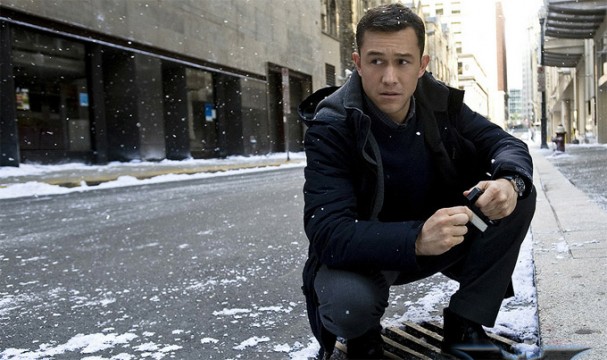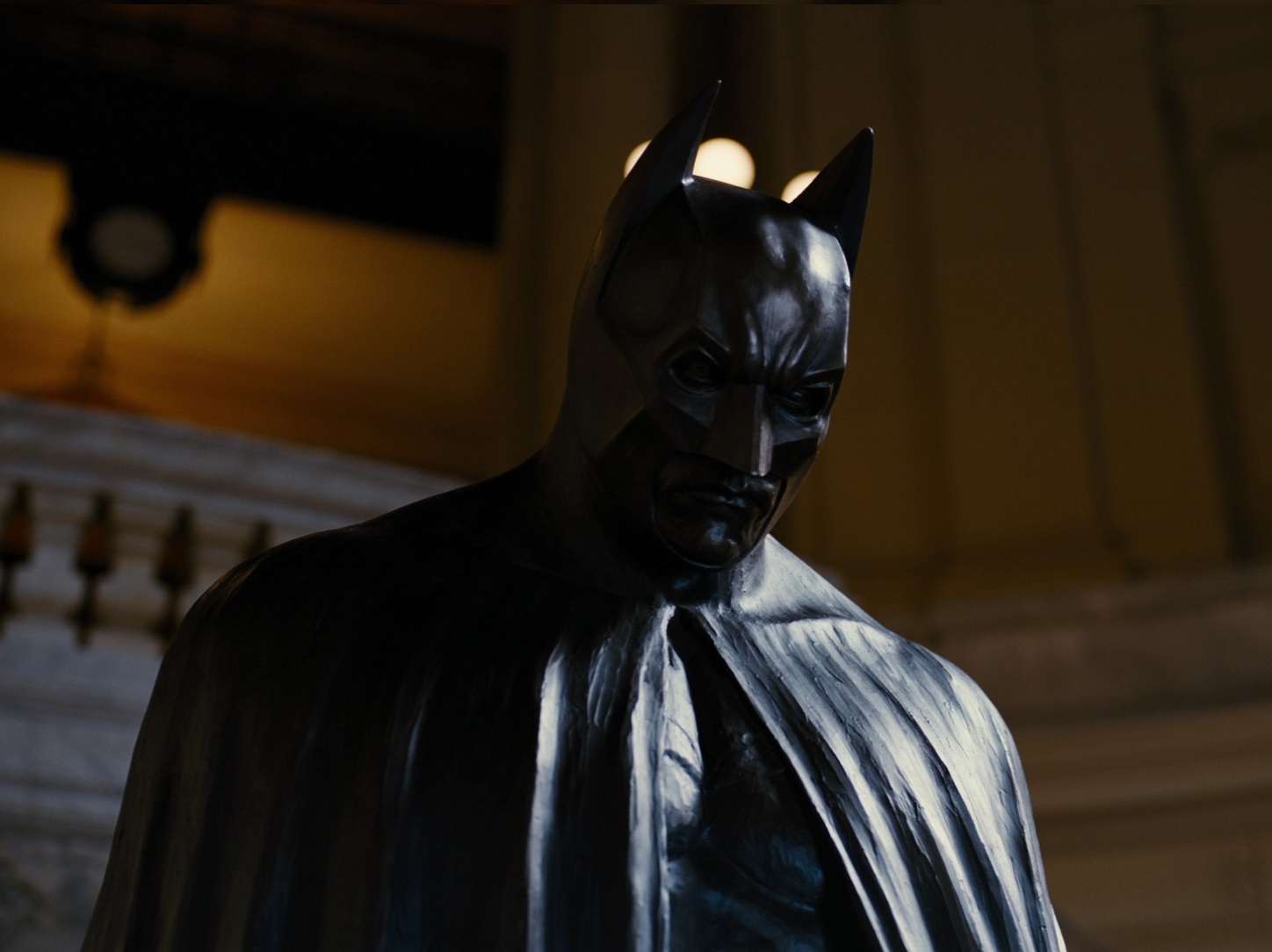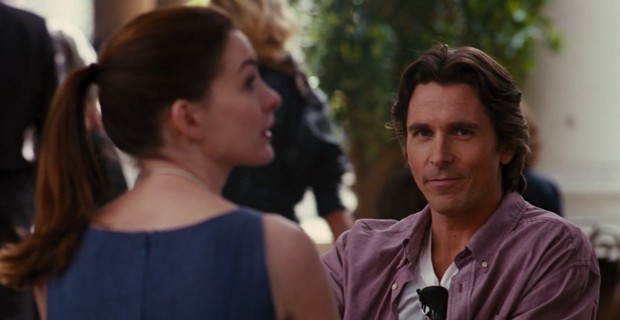By Robby Karol
When the folks at Deadshirt mentioned they were doing a retrospective in the lead up to the release of Batman v. Superman, I knew I wanted to do The Dark Knight Rises. When it came out, the capstone of Christopher Nolan’s Bat-trilogy and follow-up to the wildly popular The Dark Knight had a great deal to live up to. The Dark Knight had impressed a lot of non-superhero fans and film critics with its beautiful cinematography, strong performances, and tragic story. While it seemed like a daunting task to follow that up, if anyone could, it would be Nolan.
The teaser trailers for The Dark Knight Rises, with glimpses of Bane and Gotham under siege promised a truly epic ending to Nolan’s take on Batman. But when the film arrived, it felt like a disappointment. How could any film live up to that amount of anticipation?
So I chose The Dark Knight Rises, thinking that, with some distance, I would discover that it deserved better. And then I watched it.
And it was…alright. Just alright. In fact, rewatching it, I realized that, while I no longer had ridiculous expectations influencing my judgement, I also did not have the reserves of goodwill towards Nolan as Bat-auteur that had made me forgiving of the movie’s flaws. I realized that there was a lot more that didn’t work than I remembered.
Eight years after the events of The Dark Knight, Gotham is a city at peace. Thousands of criminals are locked up thanks to the Dent Act. People remember Harvey Dent as a hero and Batman as the terrorist who killed him and threw Gotham into bedlam. Bruce Wayne (still Christian Bale) mopes around his house in depressed retirement. But the arrival of Bane (Tom Hardy), a mercenary and former follower of Ra’s al Ghul, as well as the machinations of corrupt Wayne Enterprises board member John Daggett (Ben Mendehlsson) and mysterious cat burglar Selina Kyle (Anne Hathaway), force Wayne to put the Bat-suit back on. But Wayne has lost his edge, and when his initial attempt to stop Bane fails, he must mend his broken body and spirit, and sacrifice his life to save Gotham.
The Dark Knight Rises mixes elements of The Dark Knight Returns, Knightfall, and No Man’s Land with a sort of origin story for Ra’s al Ghul, Here, Bruce Wayne must decide whether the figure of Batman is actually good for Gotham (and himself), building nicely on the ideas of the prior films. The problems arrive in the execution. So much of The Dark Knight Rises feels like a first draft for a better, leaner film. Several scenes are filled with the on-the-nose dialogue that a screenwriter might use as a placeholder for a better line. “Let me show you some cool stuff, anyway,” is dialogue that even Morgan Freeman can’t sell, and it works worse in context.
The two-hour and 44-minute film feels baggy and poorly-paced, taking about an hour and a half to show us Gotham’s weeklong tumble over the precipice before speeding through the events of five months in a series of montages. It’s no wonder that character arcs feel shortchanged, and both new and old characters disappear for huge chunks of screen time. Case in point: my synopsis doesn’t even mention important new characters like beat cop Blake (Joseph Gordon-Levitt) and Miranda Tate (Marion Cotillard), as well as returning characters like Commissioner Gordon (Gary Oldman), Lucius Fox and Alfred (Michael Caine).
The pacing problems might be because the movie doesn’t seem to know whose story it is. Is this the story of the decline and rebirth of Batman? Is this the story of the people of Gotham? We spend a lot of time with Bruce Wayne, but the second half of the film spends almost as much time with the people of Gotham struggling to survive under Bane. A lot of things happen, but everything feels equally important.
Unfortunately, the lead performances exacerbate this problem. Bale’s performance as Bruce Wayne/Batman feels phoned in, with him holding one facial expression for most of the first half of the film. Marion Cotillard, playing the mysterious Miranda Tate, is more plot twist than character, and the need to hide the aforementioned twist leaves her without anything to do as a performer until the last ten minutes of the movie. And, on second viewing, Tom Hardy’s performance as Bane feels even more like a gifted actor’s attempt to find something, anything to latch onto in an underwritten character. He, at least, has his intimidating physicality and charisma to fall back on, but he can’t come close to the heights reached by Heath Ledger’s Joker in The Dark Knight.
The Dark Knight Rises does have its good points, however. Anne Hathaway makes an amazing Catwoman, and a second viewing emphasizes her work delineating Selina Kyle’s various poses and the real person underneath. There’s a moment where Bruce Wayne catches her out in a lie at the beginning of the film, and she drops her pose as a confused maid, revealing a sly smile, that tells us everything we need to know about Selina Kyle: her self-confidence, her sense of playfulness, her cynicism. And Joseph Gordon-Levitt manages to summon a character arc out of thin air; He delivers a monologue about recognizing the similarities between himself and Bruce Wayne and the way they hide their wounds behind false smiles with such powerful bitterness and anger. I’d argue the intensity Gordon-Levitt brings here is otherwise lacking through much of the film. Even when he does something like run through a hospital after bad guys, his body has a stiffness that suggests a man who has held back every emotion he’s felt for years.
Most importantly, Nolan’s talents as a director still shine through in amazing set-pieces. The famous football stadium explosion that showed up in the teasers has not lost any impact. And the climactic final battle, which cross-cuts between three major story threads, has a clarity and crispness in editing that few other films can match. And Wally Pfister, in his final gig as Nolan’s cinematographer, brings a cool, wintry tone to the proceedings that feels appropriately weighty. Nolan’s use of location shooting and practical effects holds up very well compared to the Marvel Studios’ house style that privileges CGI above everything. The climactic street battle between the remaining Gotham police and Bane’s army has a weight to it that the opening fight between, say, the Avengers and Hydra in Age of Ultron lacks. There’s a tactile difference between an army of extras battling in front of Independence Hall versus generic henchmen that are digitally inserted into a background. When Bane crushes a pillar with a punch, it feels more threatening, because the world of The Dark Knight Rises feels not too removed from our world, with the same physical rules as ours. The set-pieces might not reach the heights of The Dark Knight’s truck chase scene, but they still impress.
There are two points that stand out in their attempt to define what Batman is and represents. Jim Gordon, justifying his lies to Blake and Gotham, explains that sometimes someone has to go out and get their hands dirty when the system breaks down, and that is why Gotham needs Batman. Later, on his way to certain doom, Bruce Wayne tells Gordon that Batman is a role that a grieving child put on to deal with his loss and pain. They’re both interesting interpretations of Batman, which overlap and complicate each other, without quite contradicting the other. They suggest the limitations of being Batman, as a symbol that must exist but that will destroy or corrupt someone if they stay in that role too long. Looked in this way, the business with Bane and a final showdown with the League of Shadows feels like a distraction. There’s a throwaway line from Bane about him being born in darkness, while Batman has merely adopted it as a weapon, but there’s no attention given to the idea of Bane as a constructed self to contrast with Batman as a construct.
So The Dark Knight Rises is not the perfect ending to Nolan’s trilogy. But in an age of Cinematic Universes where teams of producers plot out phases and strategy, where directors struggle to hold onto a voice of their own, it’s good to remember the way that a great director’s interests and talents can redeem even a flawed work. And it shows, just like Bruce Wayne must put aside the role of Batman to survive, Nolan had to move beyond the Batman movies to continue growing as a director.
Robby Karol is a film and comic book nerd. He is currently hiding out in the Pacific Northwest with his wife, son and two weird dogs.





